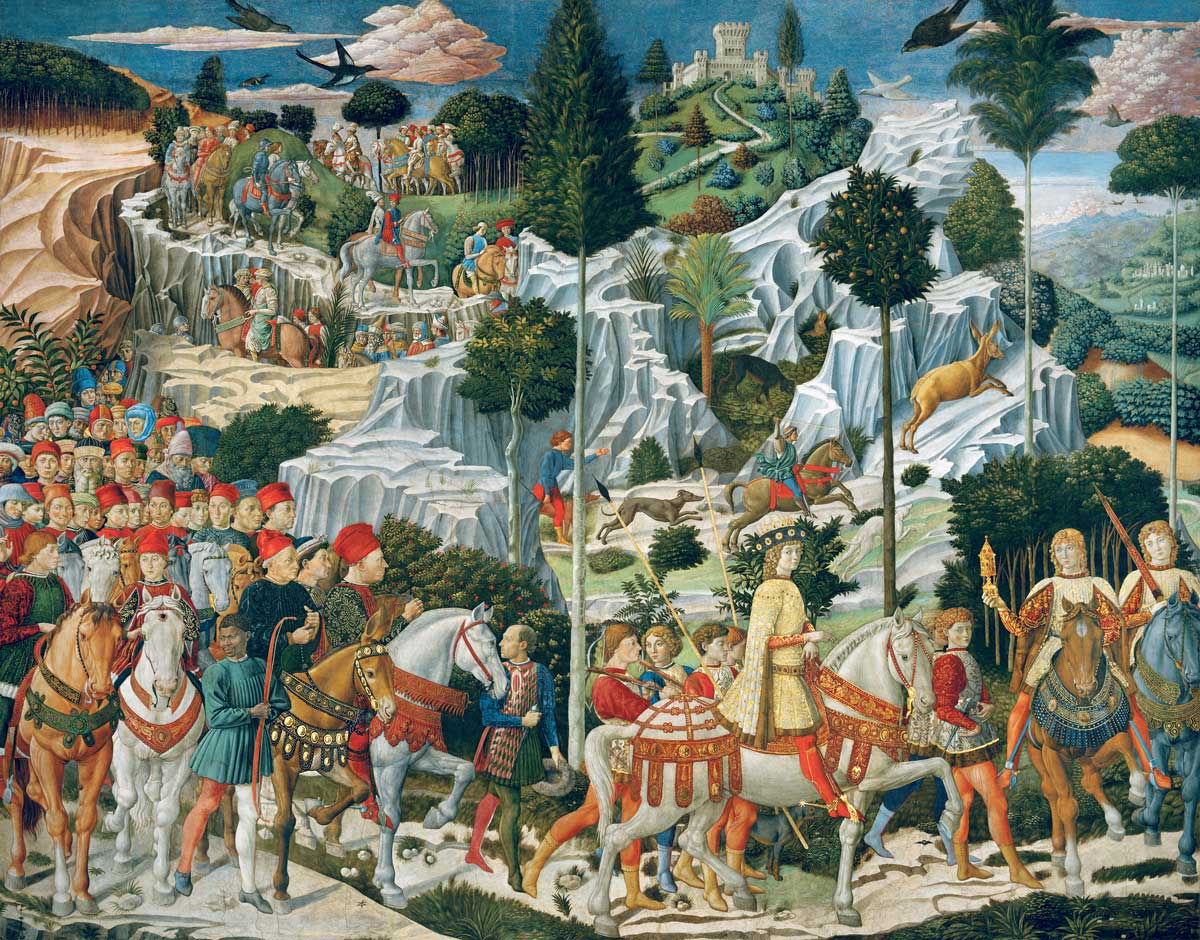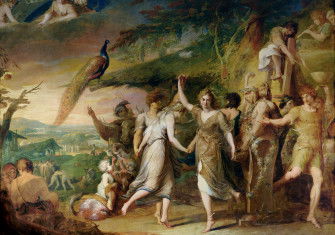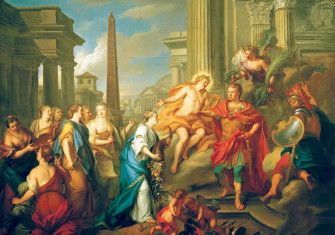The Journey of the Magi
Three wise men, guided by a star, search for the new-born Christ.

According to St Matthew’s Gospel: ‘Wise men from the East came to Jerusalem, saying, “Where is he who has been born King of the Jews? For we have seen His star in the East and have come to worship Him”.’
The three wise men who sought the infant Christ represented the entire world: Melchior, the eldest; Balthazar, traditionally portrayed as black; and Gaspar (or Caspar), the youngest. But in Benozzo Gozzoli’s portrayal of them, depicted in frescoes on three walls of the chapel of the Palazzo Medici Riccardi, the world is reduced to the Florence of the Medici family and its clients.
Here, from the east wall, at centre right, astride a white horse, is Gaspar, an idealised portrayal of the young Lorenzo, who would attain the title ‘Magnificent’. Mounted behind him are his father, Piero di Cosimo de’ Medici, ‘the Gouty’; and, on a donkey in imitation of Christ, Cosimo de’ Medici, the patriarch of the family that dominated the Tuscan city at the heart of the Renaissance.
The fresco was commissioned by Piero for the palazzo’s chapel, permission for which had been granted by Pope Martin V in 1442. The chapel was dedicated to the Holy Trinity, which had been the subject of a Church Council held in Florence in 1439. It established the Trinitarian principle that: ‘The Holy Ghost has his nature and subsistence at once from the Father and the Son.’
Gozzoli had returned to Florence from Rome in the 1450s and the Medici, ludicrously rich, employed him at great expense and at some speed to fashion frescoes similar in design to the tapestries that had become all the rage. Jewels and pure gold leaf added extraordinary colour to his creation.
There is none of T.S. Eliot’s ‘cold coming’, described in his poem ‘Journey of the Magi’ (1927), but a sumptuous, secular procession, with a deer hunt in the background and, at the top of the composition, Jerusalem in the shape of the Medici’s country villa at Cafaggiolo. Gozzoli, in a self-portrait, gazes at the viewer from second row, third from left.






